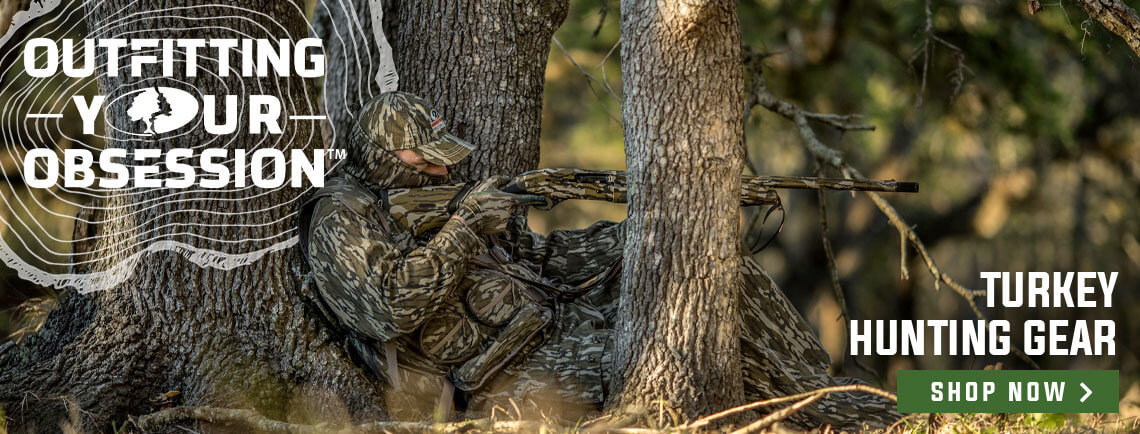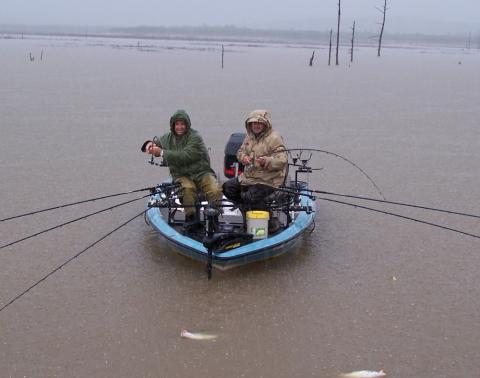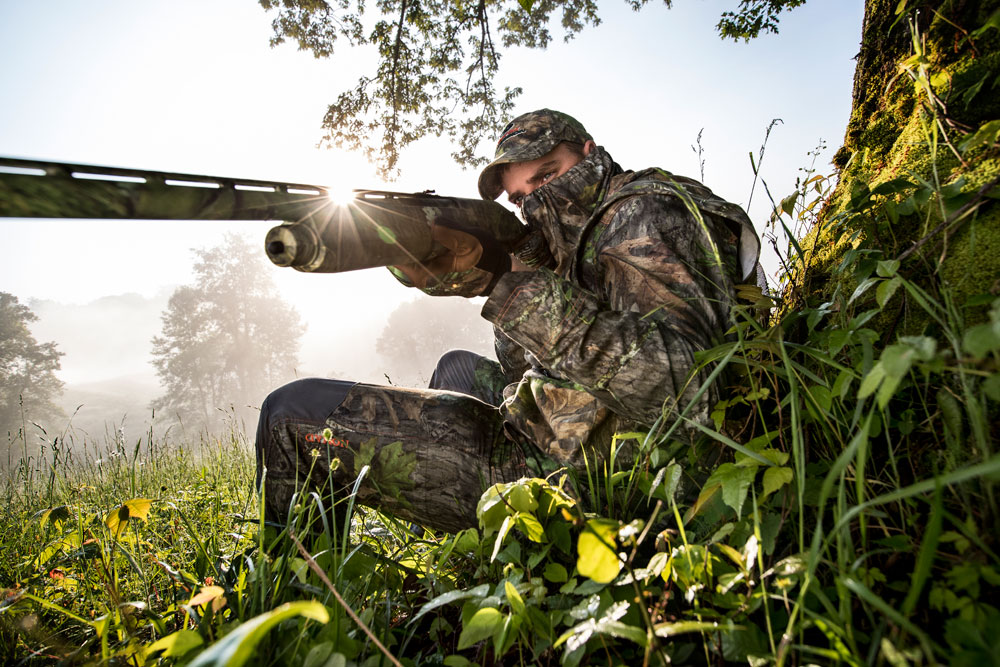
Before you even set foot in the turkey woods, you must pattern your shotgun. You have to know your choke pattern at different yards with different loads to know how your shotgun will perform in the field. Here's everything you need to know about patterning your shotgun for maximum turkey hunting success.
Why Patterning a Shotgun for Turkey Hunting Is Important
In order to have success on a turkey hunt, you must pattern your shotgun. Arguably the most important step as a turkey hunter is to know the range and best pattern for killing a turkey. The goal for shotgun patterning is to be on target, so sit and use a rest to keep the shotgun steady. Determine a good pattern at 30 yards or 40 yards and know your shotgun’s range.
By patterning a shotgun, a hunter will be able to determine how it performs at different distances and what ammo performs the best out of their specific firearm. Shooting several different types of ammo from a shotgun that is on a gun rest, so that gun is steady and provides a consistent shot each time, is an excellent way to determine what the firearm will do.
When doing this, it is strongly recommended to shoot several shots at different yardages such as 20, 30, 40 and even up to 50 yards with some of today’s technology in shotgun turkey loads. You should also try both lead and tungsten shells since they perform differently.
Use a Rest When Patterning Your Shotgun
Just as you wouldn’t shoot off-hand to sight in a rifle, don’t do it with a shotgun. Use a good, stable rest and know exactly where you want the pattern to hit on the turkey target. The rest helps eliminate human error when patterning your shotgun. It also gives young hunters confidence in their shotgun, the ammo and the choke they are using. A good rest can also reduce the recoil of 3 ½ turkey load and ease them into the jolt if they plan on shooting without a rest later on.
Once you have a good pattern on the rest, take a few shots from your turkey chair. Use the same shooting sticks you plan to hunt with, too. You want to take a few shots using the same setup you will use when turkey season opens. If you plan on using a pop-up, take a few shots from there. Always use ear protection and eye protection when patterning your turkey gun, just as you would any other firearm.
Use a Turkey Head Target and Know Where to Aim When Shotgun Patterning
Use an anatomically correct turkey target to practice aiming where to shoot a turkey. Where the skin and feathers meet – or the wattle – is where you want to aim at a turkey. The point of impact should have 20 to 25 pellets in the wattle area. It is common for a 12-gauge shotgun with a full choke to put 25 pellets in the wattle area. One pellet in the brain or spine will take a turkey down, so the more you have there, the better. Take a second to explain to young hunters what you're looking for when you examine the pattern left on your target. The more involved you keep them, the better turkey hunter they will become. Use these turkey head targets to keep notes of how your shotgun setup is working.
Printable Turkey Head Targets Available for Download
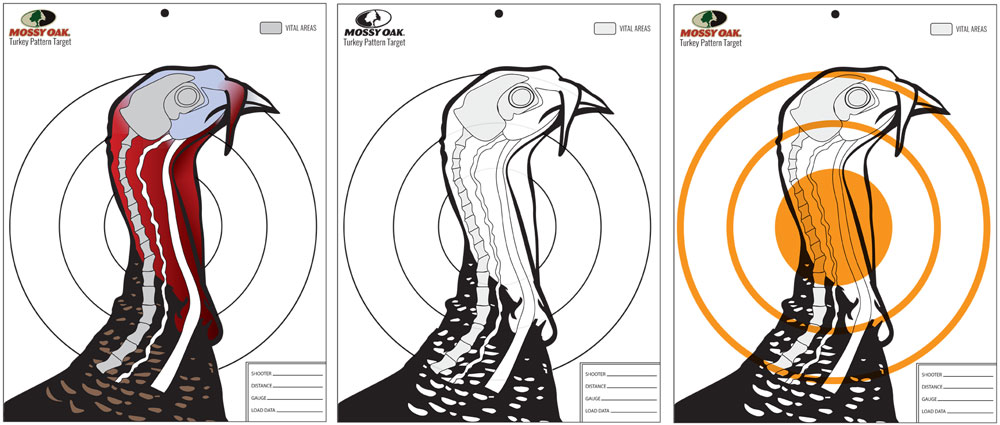
Download Color Turkey Target - Download Black and White Turkey Target - Download Orange Bullseye Turkey Target
Know What Shotgun Chokes to Use for Turkey Hunting
What is a shotgun choke? What does a choke tube do? It’s important to know what a choke is and does for your turkey hunting shotgun. Shotgun chokes simply screw into the end of the barrel of your shotgun. They come in a variety of sizes that determine how tight your pattern will be at certain distances. Shotgun patterns can be tightly constricted with pellets grouped together closely or more open when the pellets are more spread out.
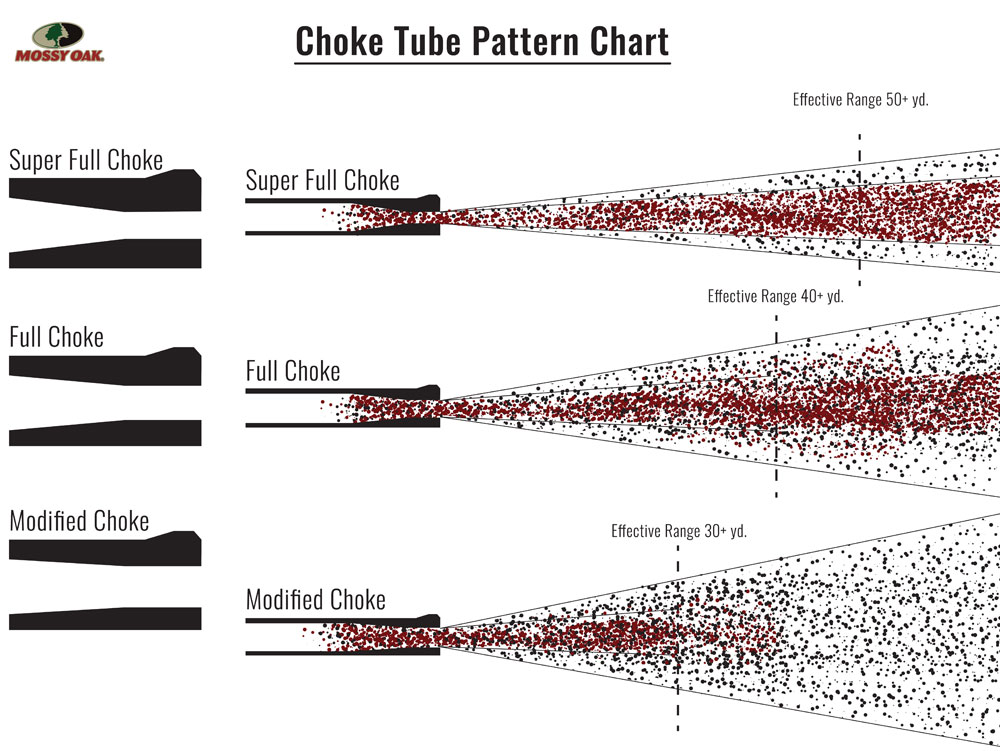
The three most common chokes for turkey hunting are modified, full and super full. The super full is also marketed as a turkey choke by various manufacturers. In some cases, a super full or turkey choke will come standard with the shotgun right out of the box. The modified choke normally has a wider pattern, the full choke has a less wide pattern and the super full or turkey choke is the smallest. You are searching to find the choke that has the highest pellet count on the turkey's head at various distances. Test all three choke tubes out and consider your hunting environment before determining which choke is best for your shotgun.
Shotgun Sights for Turkey Hunting
There are three basic types of sights for a shotgun. The open sight has a fiber optic front bead with a fiber optic rear trough. Line the front bead up with the rear sight and point it where you want it to go. It’s a very simple and very effective shotgun sight. The red dot sight has a glass reticle where you line up the front bead in the middle of the glass and aim it at your target. Red dot sights allow for a more comfortable shooting position than the open sight. And the third type of shotgun sight is a standard scope. Just as you would use a scope on a rifle, you can have the same for your shotgun.
If you're helping a new turkey hunter pattern their shotgun, a red dot or scope is easier for them to use. Be patient with them while they pattern their shotgun. Even if they shoot really well their first couple of shots, encourage them to keep shooting. The more familiar they are with their shotgun, the more likely they make a good shot with a gobbler strutting in front of them. You may want them to practice a quick follow-up shot, too.
What Are the Best Turkey Loads for Shotguns?
The size and type of turkey load you use is really a personal preference. The main shotgun shell sizes are 2 ¾, 3 and 3 ½ inches and the size you use depends on the gun gauge. Keep in mind that not every shotgun will accept 3 and 3 ½ inch shells. Make sure you know what your shotgun can handle before you buy shotgun shells. Lead pellets are the most popular and are available with copper plating. Tungsten is a new option for turkey loads. It is a heavier metal with the weight to make it go farther. This gives the option of more, smaller pellets going to your target. It’s a personal preference that is best determined by trial and error.
Even with a shotgun you have used for years, it pays to pattern it every year. Many turkey hunters are finding ammunition for hunting turkey hard to find. They end up using a new brand, load and shot type than they have used in previous years. Even though these hunters may be using the same shotgun they used last season, the new shotgun shells may change the pattern from last year. Just get out there and shoot a variety of loads with different chokes.
The most popular shot size for turkey hunting is either #4 or #6. Of course, #6 shot size will have more shot in the shell and #4 will have less but has a larger shot size. Some turkey ammo will have a combination of #4 and #6. When patterning your shotgun, try a variety of ammo types, shell sizes and shot sizes to determine what combination gives you the best pattern.
Best Shotgun Gauge for Turkey Hunting
The main thing to consider when choosing a shotgun for turkey hunting is confidence. You want to go with a shotgun you’re comfortable shooting with the right choke tube and load. A 12-gauge may shoot farther than a 20-gauge, but the 20-gauge has less recoil. The .410 is a great option, as well.
Turkey hunting challenges even the most experienced hunters. The challenge is what keeps many hunters chasing wild turkey year after year. Turkey hunters will practice their calling, scout for a turkey roost and pattern their shotguns well before turkey season opens. There is not much that compares to the excitement that comes with spring turkey hunting. Since there are so many things that can cost you a shot at a gobbler, you owe it to yourself to spend a day shotgun patterning.

